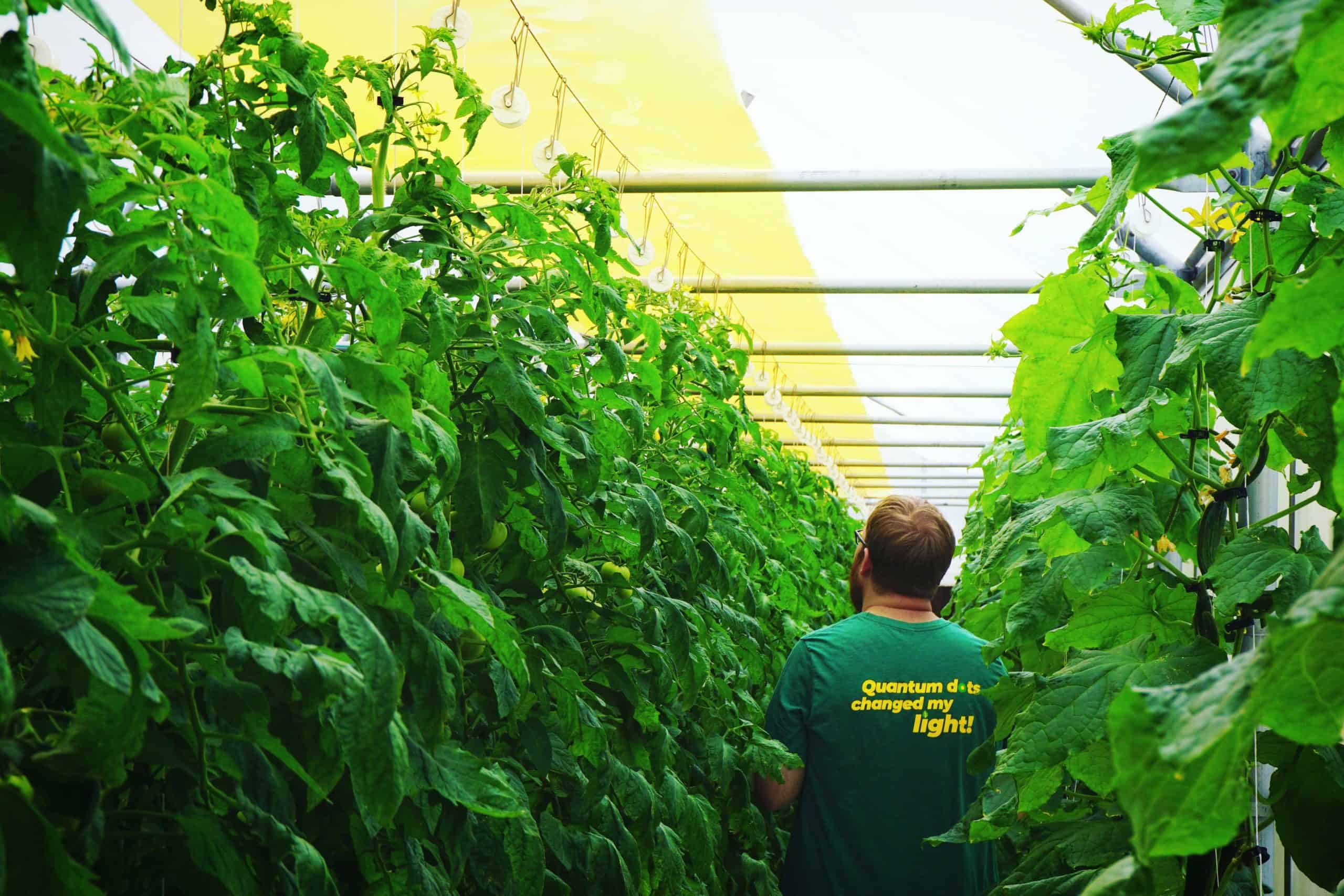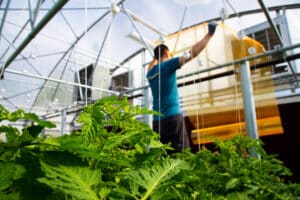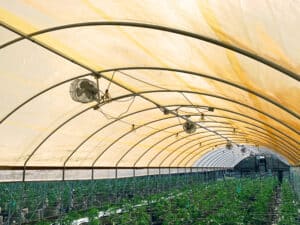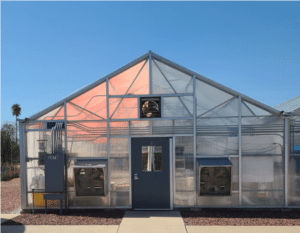
Greenhouse Cultivation: The Solution for Feeding the Planet
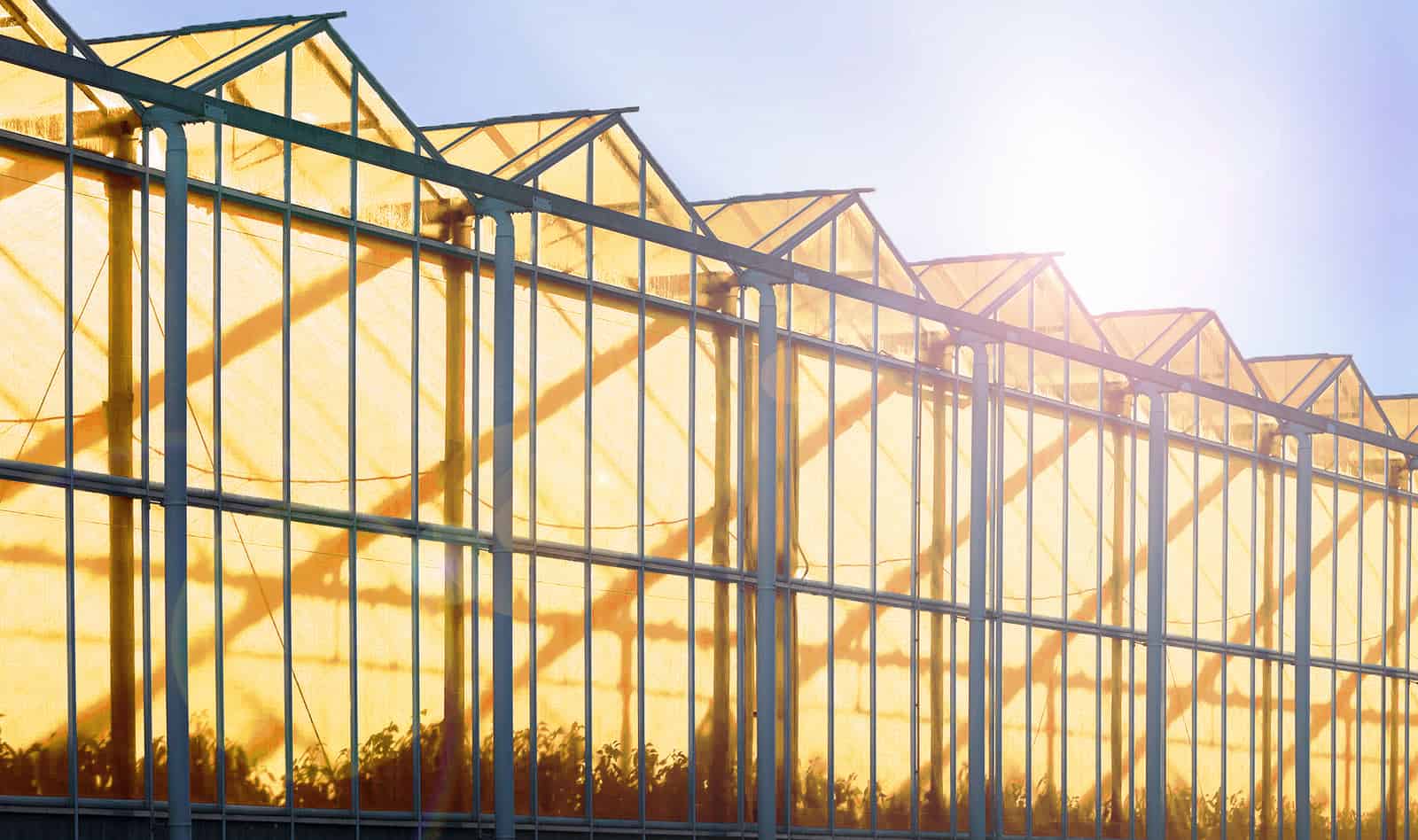
Industrial field agriculture practices and their corresponding land use threaten biodiversity and the sustainability and quality of life on Earth. As a result, commercial greenhouse cultivation, a key agricultural solution, has been gaining popularity in the marketplace as food security, land-use efficiency, water-use efficiency, and greenhouse farming for food security become drivers in consumer choice of cultivation methods. This choice is enabled both by individual farmers and by governments via policies that incentivize sustainable greenhouse farming, glasshouse farming, agriculture in greenhouse, and sustainable agriculture and land use. As transportation and non-renewable fuel costs rise, and previously dependable farmland loses viability, consumers can no longer depend on field-grown crops shipped around the globe to meet their year-round demand for food. Instead, we must overhaul our food production system to be more local and sustainable, offering an economically feasible and year-round alternative to the status quo of untenable industrial agricultural practices and greenhouse for food production. These sustainable agricultural solutions must include the reduction of agrochemical runoff, more efficient use of freshwater resources, and reduction in fossil fuel consumption for food production and distribution.
The Impact of Industrial Agriculture in a Changing Climate
In recent years, traditional open-field farming output has decreased per capita while worldwide hunger has risen, primarily due to the destructive impacts of climate change like flooding, drought, wildfires, and increasingly severe weather that make field-based agriculture more vulnerable. In contrast, glasshouse farming and agriculture in greenhouses offer a sustainable alternative, shielding crops from such adversities and potentially securing food production. By incorporating greenhouse for food production into our agricultural practices, we can mitigate some of the challenges posed by a changing climate on traditional farming methods.
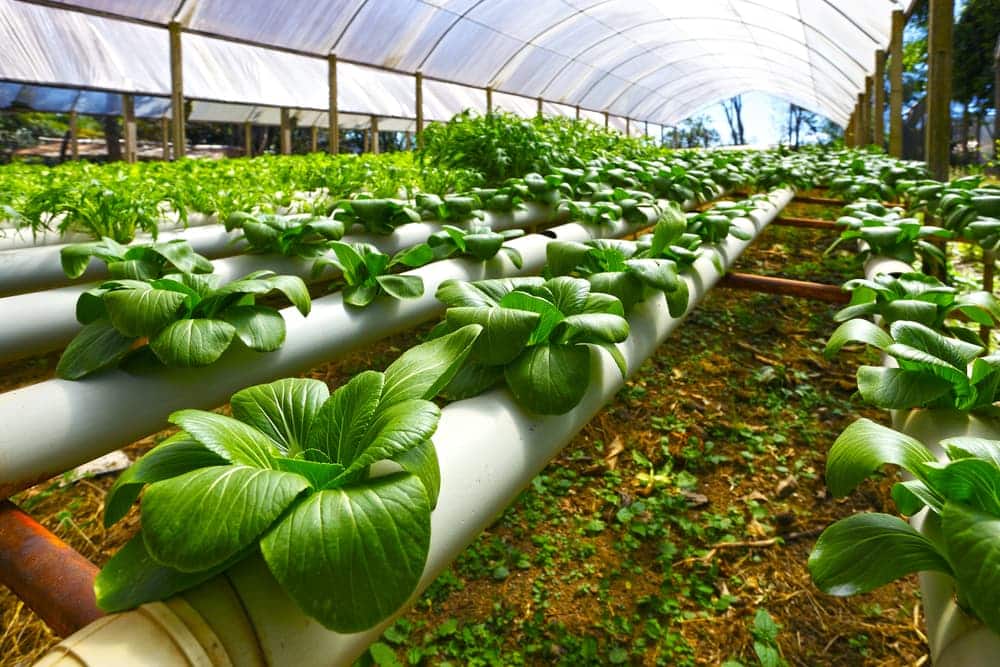
Weather & Climate Change
Current industrial agricultural practices, including those not utilizing advancements like glasshouse farming, cause or exacerbate many global environmental problems, most importantly climate change and water scarcity. By releasing millions of tons of carbon compounds into the atmosphere annually and using massive amounts of fresh water, industrial open-field agriculture has realized enormous short-term gains in production and prosperity; however, it threatens long-term damage to essential ecological systems. Agriculture in greenhouse settings, by contrast, often requires less water and can reduce carbon output.
Industrial agriculture accounts for 10% of all greenhouse gas emissions in the US. Conventional soil management with nitrogen fertilizer applications results in the release of nitrous oxide and accounts for 40% of these emissions. Natural digestion in animals, releasing methane, accounts for 30%. Livestock manure management accounts for 14%, and agricultural energy use, including powering machinery, mechanized operations, food processing, and transport, account for 10%. The adoption of greenhouse for food production could potentially mitigate some of these emissions through more controlled environments.
Extreme weather events have been increasing over the past decade in the U.S., leading to longer and more severe droughts in some areas while others suffer from more intense periods of heavy rain. Coastal farmland and fresh water supplies are threatened by rising sea levels that result in salt accumulation in soil and groundwater. Recently, wildfires have threatened farmland on the west coast as well, with many crops being lost to the fire or the ash from nearby wildfires. These changes in climate represent great challenges for field-based agriculture, highlighting the potential benefits of glasshouse farming as a resilient alternative.
Fresh Water for Agriculture
An excerpt from Sandra Postel’s book, “Dividing the Waters,” notes that clean, safe, available fresh water accounts for only 0.008% of all water on Earth, yet in most countries the consumption of fresh water resources is not closely monitored or controlled. Reliable access to fresh water will become one of, if not the, most critical environmental challenges facing the planet in the coming decades. Industrial agriculture is the single largest consumer of water in the world by economic sector, accounting for 70% of fresh water use. Some irrigation used in agriculture is sustainable, but an estimated 15-35% of irrigation withdrawals are unsustainable and cannot continue without causing permanent damage to aquifers and other limited water sources. In many regions, cities and industrial agriculture compete for the same limited fresh water resources.
For persons in developed countries, the water footprint of food accounts for 92% of people’s daily water use per capita, dwarfing home use and dry goods metrics. The water footprint, defined as the volume of fresh water used in the food production process, varies with food type, and can range from ~300 L/kg for vegetables to ~900 L/kg for fruits. Non-crop food types such as bovine meat can be as high as ~15,000 L/kg.
With the development of water-efficient growing methods, the water footprint of food can be greatly reduced. Solutions to reduce water use for agriculture include increasing water use efficiency of food production, the use of alternative water sources (such as reclaimed, wastewater, and stormwater), and the use of efficient, localized irrigation systems like drip micro-irrigation and sub-irrigation. Most water efficiency gains that greenhouses using hydroponics realize are through the recirculation of nutrient solutions.
Local Food Supply
Industrial field agriculture practices and their corresponding land use threaten biodiversity and the sustainability and quality of life on Earth. As a result, commercial greenhouse cultivation, including glasshouse farming and agriculture in a greenhouse, has been gaining popularity in the marketplace as food security, land-use efficiency, and water-use efficiency become drivers in consumer choice of cultivation methods. This choice is enabled both by individual farmers and by governments via policies that incentivize sustainable greenhouse farming, sustainable agriculture, and land use, focusing on greenhouse agriculture for food. As transportation and non-renewable fuel costs rise, and previously dependable farmland loses viability, consumers can no longer depend on field-grown crops shipped around the globe to meet their year-round demand. Instead, we must overhaul our food production system to be more local and sustainable, including the adoption of greenhouse (or glasshouse) farming for food, and offer an economically feasible and year-round alternative to the status quo of untenable industrial agricultural practices. These sustainable agricultural solutions must include the reduction of agrochemical runoff, more efficient use of freshwater resources, and reduction in fossil fuel consumption for food production and distribution, with an emphasis on the role of greenhouse farming in achieving these goals.
The Greenhouse Alternative
Controlled environment cultivation in localized greenhouses represents an economically feasible and sustainable alternative to industrial field-based agriculture. The primary benefit of greenhouse cultivation is the protection of crops from hazards such as adverse weather, pests, and diseases. Providing an enclosed growing area prevents crops from suffering damage from extreme climate-related events such as sudden changes in temperature. As fires and drought are impacting farming across the globe, greenhouses represent a hedge against climate change by providing consistent food production.
Greenhouse cultivation is one of the most productive and efficient agricultural systems, affording the advantages of environmental parameter control (temperature, humidity, light, etc.); higher resource-use efficiency (water, nutrients, land, etc.); and the use of advanced technologies (hydroponics, automation, etc.) for greater productivity, earliness, reliability, and quality of production.
Greenhouses are able to produce 20-50 times more yield per acre than conventional field agriculture, while using 10% as much water. Maximum water-use efficiency is a major advantage of controlled environment cultivation over field cultivation. Drip irrigation systems employed in greenhouses can have no surface run-off since the water is delivered uniformly and directly to the root area of the plants, and hydroponic systems can be designed to recirculate water and nutrients for further efficiency.
A greenhouse also takes advantage of an abundant, freely available resource: natural sunlight. Sunlight not only grows crops, but also heats the greenhouse when needed.
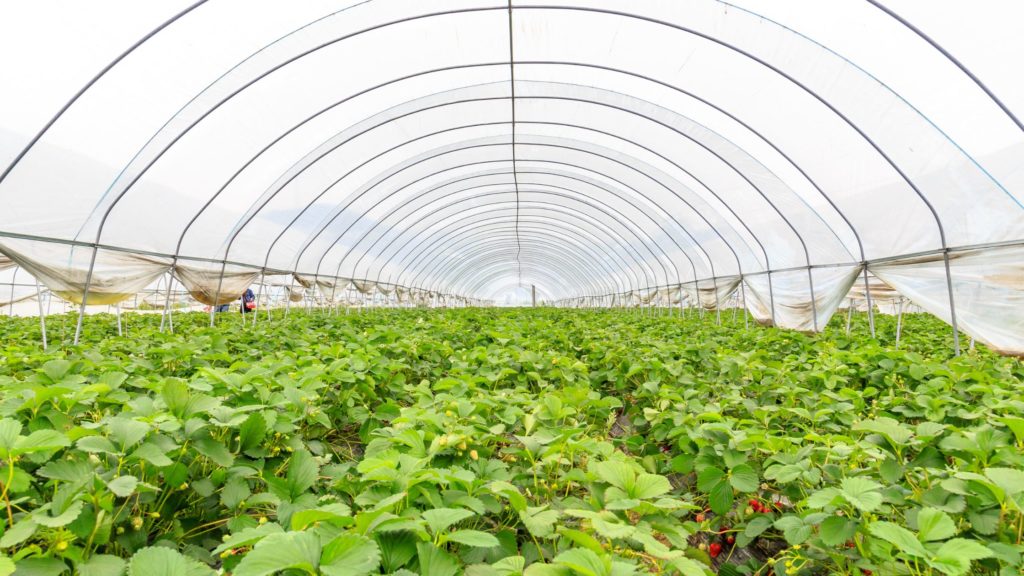
The closed nature of greenhouses also reduces the risks of soil-borne diseases. For instance, diseases spread when wet soil is splashed onto leaves while it rains (or when using overhead irrigation systems). By use of drip irrigation or hydroponics, the amount of moisture on leaves is reduced, further reducing the risk of fungal diseases that thrive on wet foliage. Additionally, management of weeds in the greenhouse is easier. Plants grown in greenhouses consume less space but produce more fruits per acre, and this dense concentration makes weeding easier.
Moreover, use of drip irrigation denies weeds the water they need to thrive. Well-organized greenhouses minimize the distance to cover when tending a crop, reducing labor requirements. Most controlled environment production (greenhouse and indoor) abstains from the use of synthetic fertilizers, herbicides, and pesticides. Instead, many greenhouse farms rely on composting and other soil amendments that divert organic waste from landfills while improving soil quality and carbon storage.
Greenhouses enable year-round crop production, extending the growing season and supplementing conventional agriculture in off-season months, creating greater availability of fresh food for consumers in times of low supply from field agriculture. Greenhouses also enable cultivation of crops that do not typically thrive in the local climate, and greenhouse production serving local communities reduces transportation costs for food that would otherwise be shipped across continents. Cannabis growers also benefit from greenhouse cultivation as it offers the best combination of low cost and high-quality product, due to utilizing sunlight instead of electrical lights, as well as environmental control provided by greenhouses.
Sensors, environmental control technologies, and automation used in greenhouses ensure high productivity levels with low labor requirements. By employing sensors to monitor conditions and automation to perform repetitive tasks, greenhouse cultivation alleviates the need for unskilled labor.
Finally, a distinction must be made between controlled environment cultivation in greenhouses and indoor or vertical farming. The similarities in terms of environmental control remain, but greenhouses rely on sunlight and typically have their plants arranged on a single horizontal plane. While greenhouse cultivation makes much more efficient use of land area than does field agriculture, the two-dimensional arrangement requires a larger amount of area than vertical farming, and is therefore best suited for rural or peri-urban areas. Vertical farms typically operate in urban areas as they need far less land area than greenhouses to operate because—as the name implies—vertical farms grow plants in stacked layers and rely solely on electrical light. The downside of vertical farming is its reliance on electrical lighting. Even if efficient light-emitting diode (LED) fixtures are used, indoor vertical farming has high energy costs compared to sun-lit greenhouses. The initial capital costs of a vertical farm are also 2x higher than greenhouse operations, and the cost per pound of delivered produce is about 30% higher. A hybrid approach that appears promising is a vertical farm inside a greenhouse, taking advantage of free sunlight while maximizing volumetric efficiency.
In conclusion, controlled environment agriculture in greenhouses, a key sustainable greenhouse farming and greenhouse cultivation practice, is poised to solve many global food challenges, such as local production, reduced carbon emissions, efficient water use, and extreme weather protection. The ability to grow local, fresh produce and transport it to the mass-market within hours or days is available today with current technology, and it is only improving. Additionally, as climate change worsens and brings dramatic weather changes, greenhouse agriculture protects crops against severe weather and volatile changes in weather patterns, showcasing its role as a vital agricultural solution for cultivation. In the coming years, greenhouses will progressively grow a greater portion of our food and medicines, to the benefit of our health, environment, and economic prosperity.

Dr. Damon Hebert serves as Director of Agriculture Research for UbiQD, Inc., with a background in solar materials and controlled environment cannabis cultivation. He is an advocate for the use of advanced materials to further the industry’s push towards sustainable farming practices. He can be reached at [email protected].

Dr. Damon Hebert serves as Director of Agriculture Research for UbiQD, Inc., with a background in solar materials and controlled environment cannabis cultivation. He is an advocate for the use of advanced materials to further the industry’s push towards sustainable farming practices. He can be reached at [email protected].
Share:
Connect With Us
Company
Resources
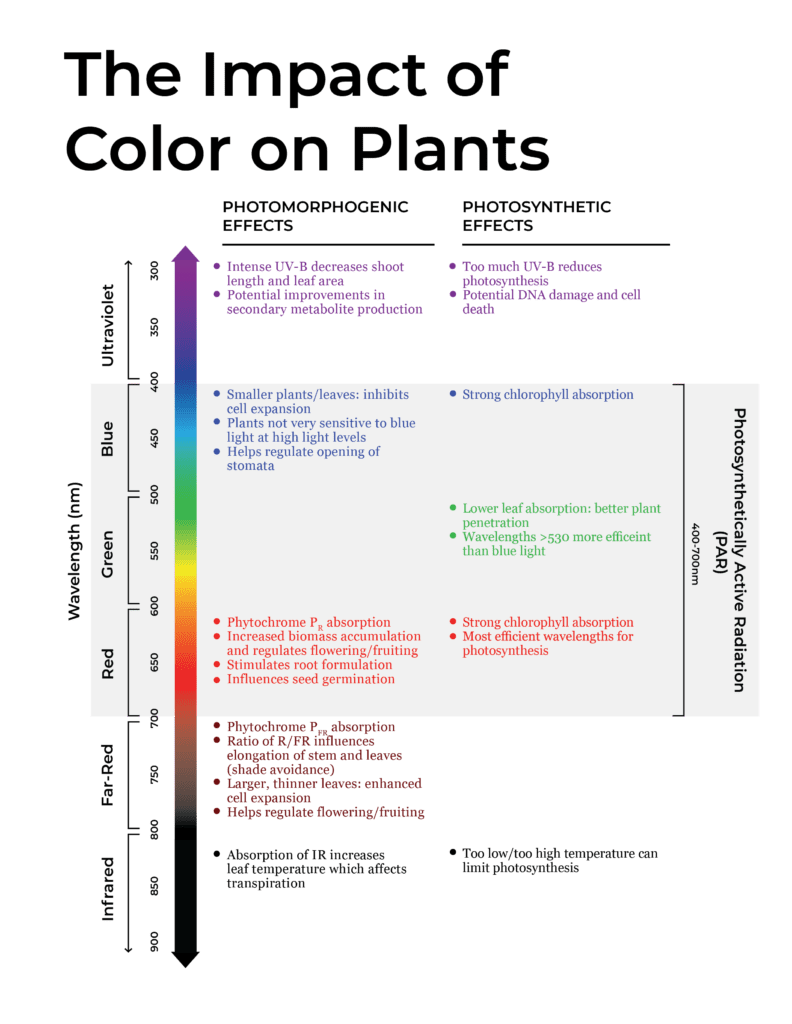

Hunter McDaniel, PhD
Founder & CEO
Hunter earned a Ph.D. in Materials Science and Engineering at the University of Illinois at Urbana-Champaign, before joining Los Alamos National Laboratory in the Chemistry Division. Ultimately the value proposition of UbiGro is about boosting crop yields and quality without the cost or energy impact of lighting. Hunter has more than fifty publications and patents, and more than 2000 total citations, h-index: 20. Hunter fundamentally believes that novel materials underpin every significant technology advancement, and he is focused on leveraging new materials to have a lasting and sustainable impact.

Damon Hebert, PhD
Director of Agriculture
Damon brings a wide range of experience in agriculture, materials science, spectroscopy, and small business. During his time in Prof. Angus Rockett’s research group at The University of Illinois at Urbana-Champaign (UIUC), Hebert authored a doctoral thesis and multiple papers on the materials science of CIGS semiconductor materials, which is closely related to the materials developed at UbiQD. He also served as a consultant to Nanosolar, a CIGS nanocrystal solar cell manufacturing company. Hebert has industry experience having co-founded Dr. Jolly’s, a leading cultivation and distribution operation in Bend, OR.

Tania Lafaille
Sales Representative
Tania is a UbiGro Sales Representative, with over 7 years of experience in product sales (specifically berries and avocados) covering all of North America and parts of South America. While in agriculture, Tania has cultivated strong relationships with growers and distributors, granting her a unique insight into both perspectives. That understanding, paired with her fierce dedication to results, drives her fun and fiery commitment to her craft. Tania is based in Gilroy, CA.

Tyler Veyna
Sales Representative
Tyler brings 15 years of experience in Greenhouse production and facility management of a wide range of crops in multiple states to the UbiGro team. Based in Salinas, California. “Being a fourth-generation farmer, I look to improve and empower the grower, and with UbiGro, we can do just that.”

Jim Gideon
Sales Manager
Jim Gideon is an UbiGro Sales Manager, with over 25 years of greenhouse industry sales experience covering all of North America. Previously Jim has worked for Green Tek, Plazit-Polygal, Texel, Cherry Creek, and Nexus. He is based in Montgomery, AL, and Jim believes that “light is everything to the grower.”

Eric Moody
Director of Sales
Eric Moody is UbiQD’s Director of UbiGro Sales. Eric has more than 6 years of experience in horticulture lighting industry, building relationships with greenhouse growers of all sizes and crops on optimal lighting for their growing operation, and most recently managed a North American sales team for PL Light Systems. Overall, Eric has been in sales leadership positions for more than 13 years. Eric brings with him a great understanding of the market and available technologies for growers, greenhouse facilities, and sales leadership. Reach Eric by phone at 541-490-6421 or by email at [email protected].

Mike Burrows, PhD
Dr. Michael Burrows is UbiQd’s Vice President of Business Development. His educational background includes a Materials Science doctorate from the University of Delaware and an MBA from Duke University Fuqua School of Business. His career has specialized in the commercialization of novel electronic materials in venture-run programs for different industries including solar, biosensors, and the automotive industry. In both start-up and corporate environments, he has extensive experience in global market development, foraging supply chain partnerships, productization, and brand building. He is currently leading UbiQD’s partnership efforts in luminescent greenhouse technology, smart windows, and security ventures.

Matt Bergern, PhD
Cheif Product Officer
As Chief Product Officer at UbiQD, Dr. Matt Bergren leads the company’s product development efforts, sales, and product manufacturing, including the company’s first commercial agriculture product, UbiGro. He plays a critical role in continuing the company’s path of technology development and vision of powering product innovations in agriculture, clean energy, and security.
He serves as the principal investigator for UbiQD’s contract with NASA, focused on tailoring the solar spectrum for enhanced crop production for space missions. Dr. Bergren’s leadership experience includes serving on the board of directors for the New Mexico Energy Manufacturing Institute, focused on job creation in New Mexico’s energy, and related manufacturing community.
